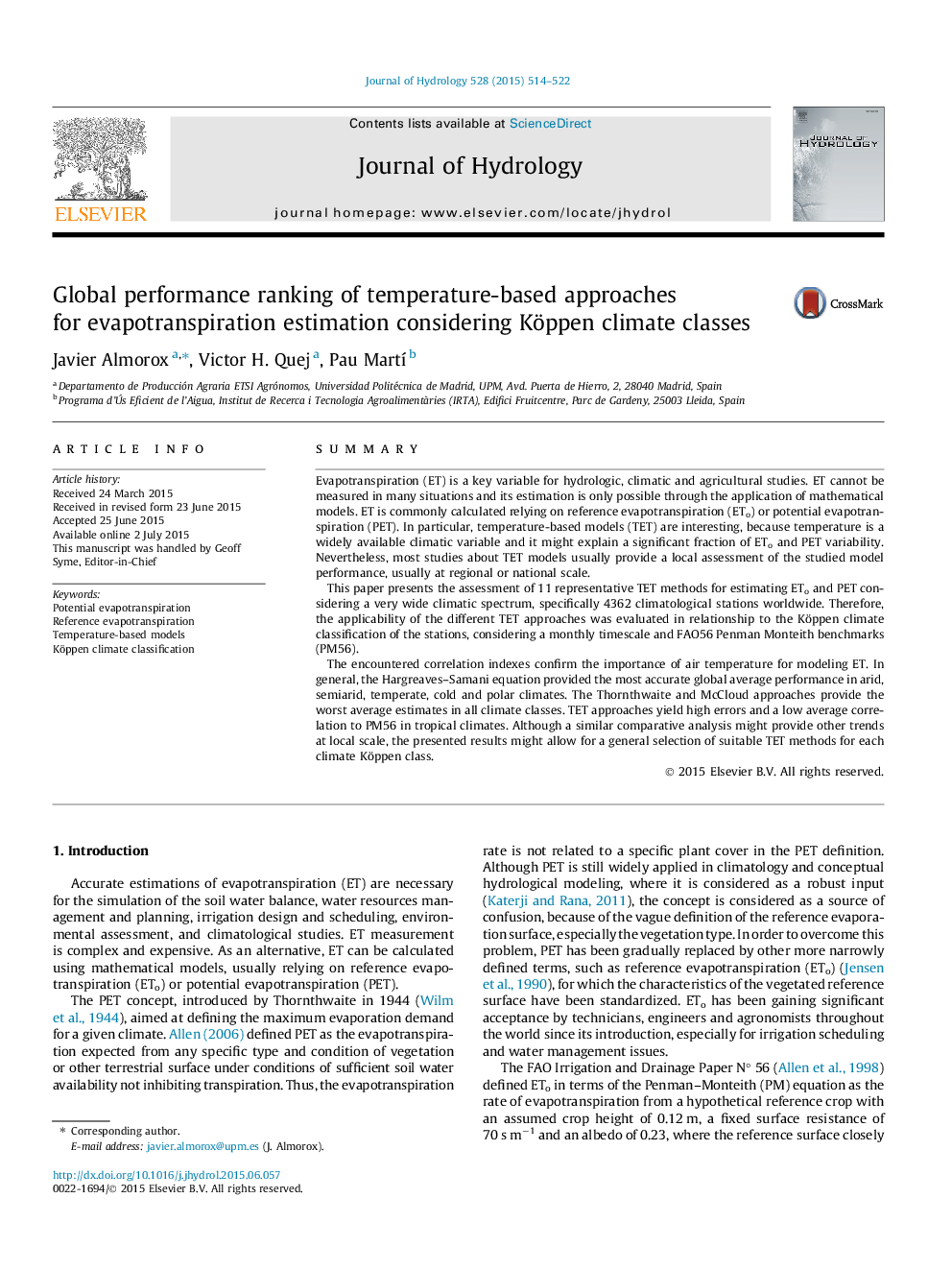| کد مقاله | کد نشریه | سال انتشار | مقاله انگلیسی | نسخه تمام متن |
|---|---|---|---|---|
| 6410911 | 1629922 | 2015 | 9 صفحه PDF | دانلود رایگان |

- Temperature-based evapotranspiration models were compared considering a wide climatic spectrum.
- The Hargreaves Samani model provided the most accurate global average performance.
- The Thornthwaite and McCloud provide the worst estimates in all climate classes.
- Temperature-based models provide high errors in tropical climates.
SummaryEvapotranspiration (ET) is a key variable for hydrologic, climatic and agricultural studies. ET cannot be measured in many situations and its estimation is only possible through the application of mathematical models. ET is commonly calculated relying on reference evapotranspiration (ETo) or potential evapotranspiration (PET). In particular, temperature-based models (TET) are interesting, because temperature is a widely available climatic variable and it might explain a significant fraction of ETo and PET variability. Nevertheless, most studies about TET models usually provide a local assessment of the studied model performance, usually at regional or national scale.This paper presents the assessment of 11 representative TET methods for estimating ETo and PET considering a very wide climatic spectrum, specifically 4362 climatological stations worldwide. Therefore, the applicability of the different TET approaches was evaluated in relationship to the Köppen climate classification of the stations, considering a monthly timescale and FAO56 Penman Monteith benchmarks (PM56).The encountered correlation indexes confirm the importance of air temperature for modeling ET. In general, the Hargreaves-Samani equation provided the most accurate global average performance in arid, semiarid, temperate, cold and polar climates. The Thornthwaite and McCloud approaches provide the worst average estimates in all climate classes. TET approaches yield high errors and a low average correlation to PM56 in tropical climates. Although a similar comparative analysis might provide other trends at local scale, the presented results might allow for a general selection of suitable TET methods for each climate Köppen class.
Journal: Journal of Hydrology - Volume 528, September 2015, Pages 514-522